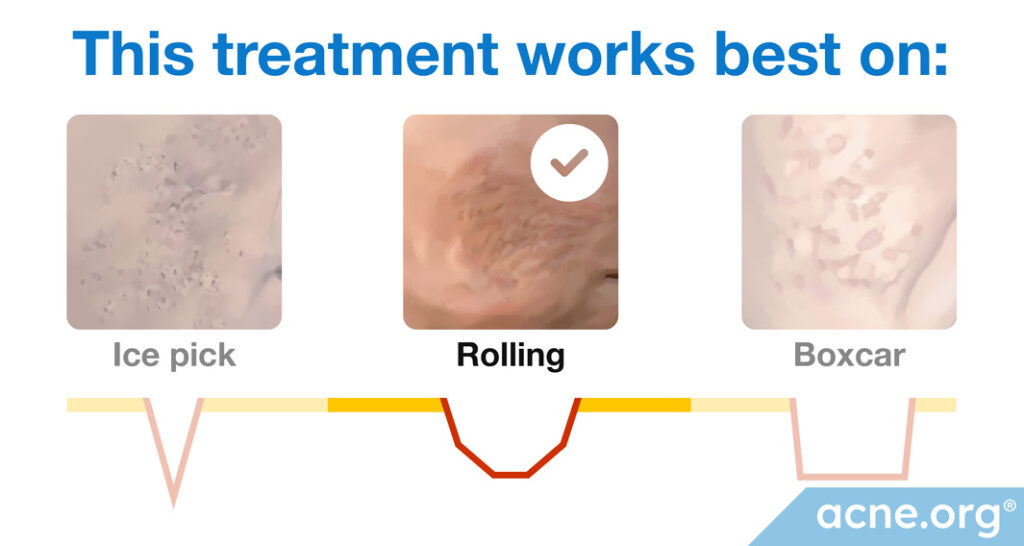
* Skin needling/rolling works best for rolling scars.
Skin needling/rolling is an uncomfortable and sometimes painful procedure in which many small, fine needles are inserted into the skin, creating numerous pin-sized holes in the upper layers of the skin. The goal is to stimulate the formation of collagen and elastin, which will build the skin underneath the scars and raise them, evening out the skin surface.1,2 Skin needling is akin to a physical version of fractional laser treatment, although it is not as effective as fractional laser treatment in improving acne scars.
Skin needling/rolling also goes by many other names, including:
- Microneedling
- Needle dermabrasion
- Dry tattooing
- Percutaneous collagen induction therapy (PCI)
- Dermaroller3
Compared to other scar revision procedures, skin needling has several advantages:
- Relatively inexpensive
- A short recovery period of 2-3 days
- Low risk of hyperpigmentation (darkening of treated skin) after treatment.1,2
On the other hand, skin needling has some disadvantages too:
- Not as effective as other scar revision treatments
- Can be painful.
Although skin needling is usually performed by a doctor, patients can also do it themselves. However, the skin needling tools available to patients over-the-counter typically have smaller needles than the tools doctors use and are therefore less effective. If you decide to perform skin needling yourself, talk to a doctor first to make sure it is a safe option for you.
As with all scar revision treatments, skin needling is sometimes combined with other scar revision procedures to achieve desired results.
People with active acne should not undergo acne scar repair of any kind, including skin needling. Make sure your skin is clear of acne before beginning scar treatment.
Before agreeing to undergo skin needling, ask multiple doctors about their opinions, proposed treatments, expected outcomes, and prices.
Procedure details:
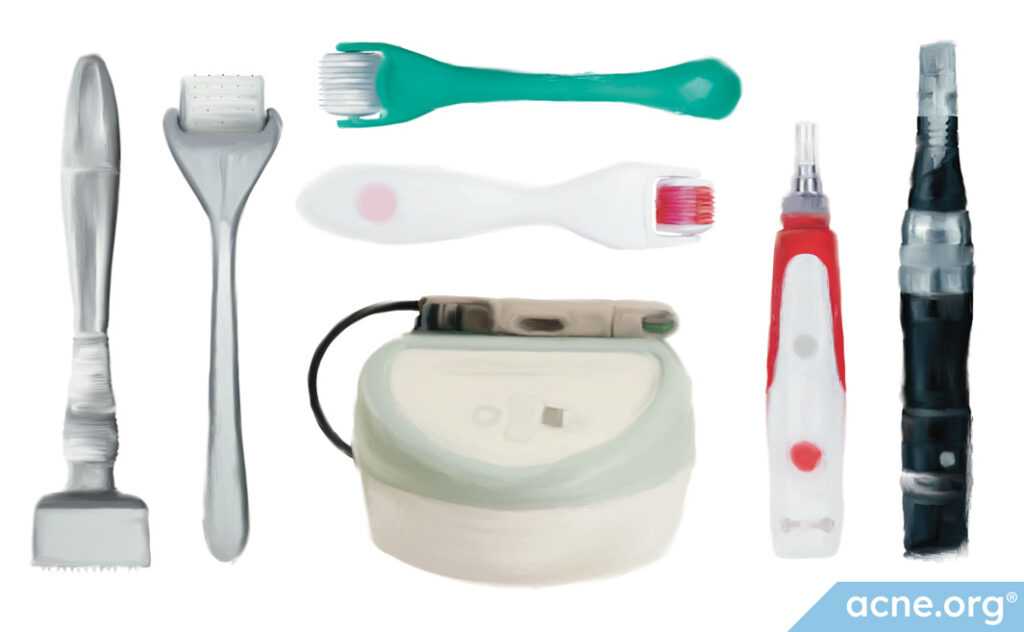
Various rollers used for skin needling
In skin needling, a doctor uses fine needles 1-2.5 mm in length to pierce the epidermis (the outer layer of the skin) as well as the upper one-third to one-half of the dermis (the second, deeper layer of the skin).1,2
Needling tools available to consumers tend to have shorter needles (0.2-1 mm in length) compared to the needles used by doctors. These shorter needles penetrate less deeply into the skin and are less effective for acne scars. Even if you are able to find needles over 1 mm long on the market, do not use such long needles without a doctor’s supervision.

Skin needling can be performed by a physician or dermatologist or, using shorter needles, by the patient herself with one of the following needling devices:1,2
- A cylindrical roller: This tool looks like a miniature paint roller covered with fine needles. The doctor or patient rolls the device over the skin with a firm touch.
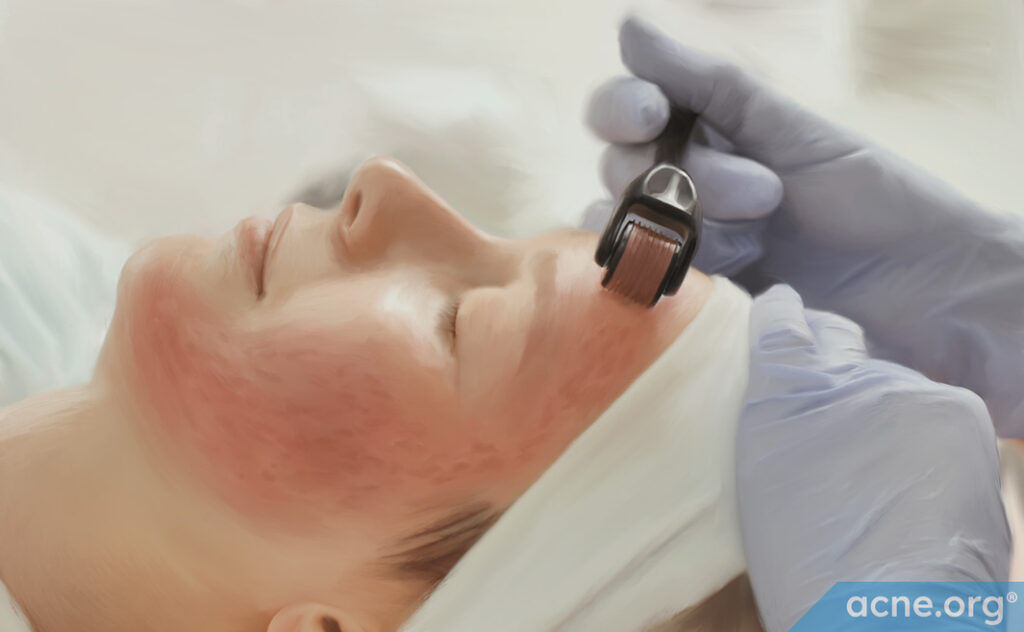
A doctor moves a skin needling roller over a patient’s skin.
- A needling pen: This tool looks like a round rubber stamp with needles coming out of its business end. With a manual pen, the doctor or patient presses the pen down over a patch of skin, then moves the pen over to a different patch of skin and repeats. However, most needling pens today have an electric motor which stamps the needles down and raises them at a set speed, so all the doctor or patient has to do is glide the pen across the skin.
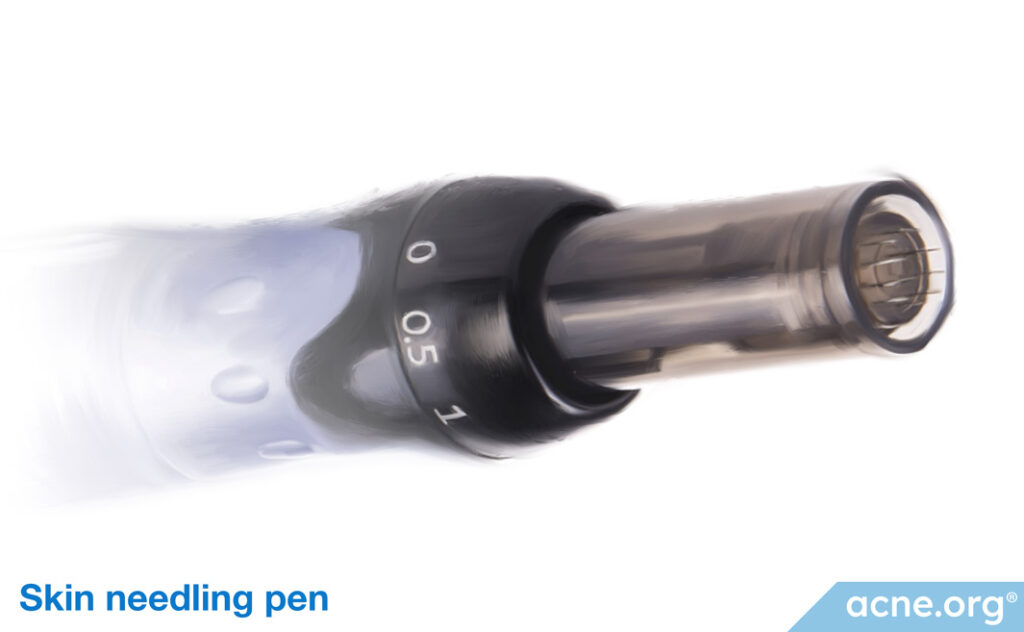
Pen used for skin needling
Although both rollers and pens make small holes in the skin, the holes that rollers make are wider because of the way rollers move across the skin.

Both rollers and pens are widely available on the market, making skin needling an accessible and low-cost procedure.3
Anesthesia:
At a medical office: Skin needling can be uncomfortable and even painful, so if you undergo needling at a medical office, your doctor will probably apply a topical anesthetic, such as a cream containing the numbing drug lidocaine, to your skin 30 to 60 minutes before beginning the treatment.
At home: If you perform skin needling at home, the needles may be shorter than those used by doctors, so you may not need to numb the skin at all. However, if you want to make the procedure more comfortable, you can help numb the skin by:
- Applying an icepack to the skin before beginning the treatment
- Applying an over-the-counter numbing cream to the skin surface
Before-and-after:
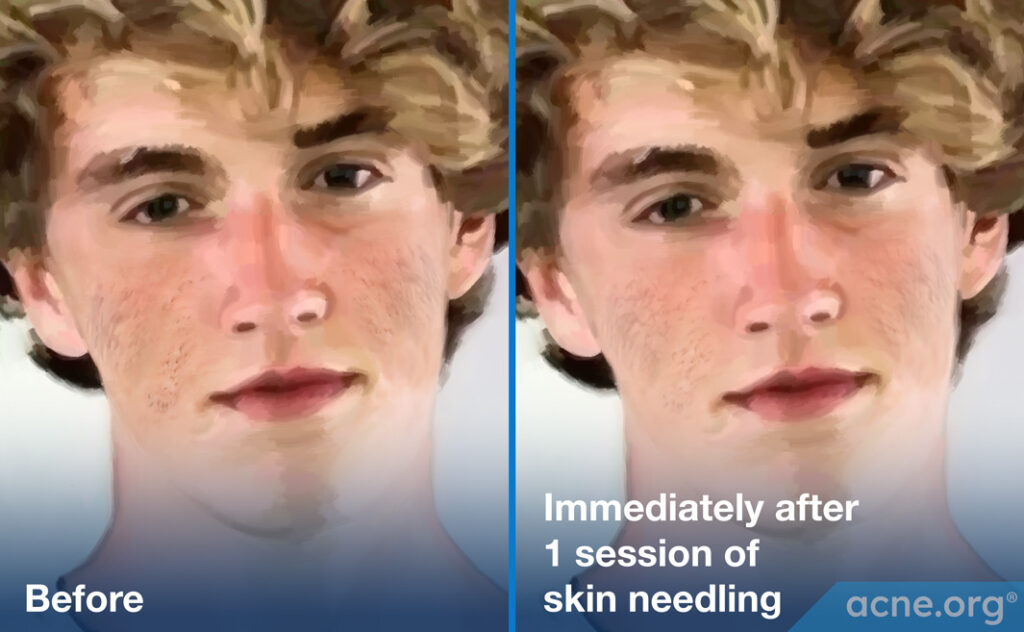
Acne scars before (left) and after (right) one session of skin needling.
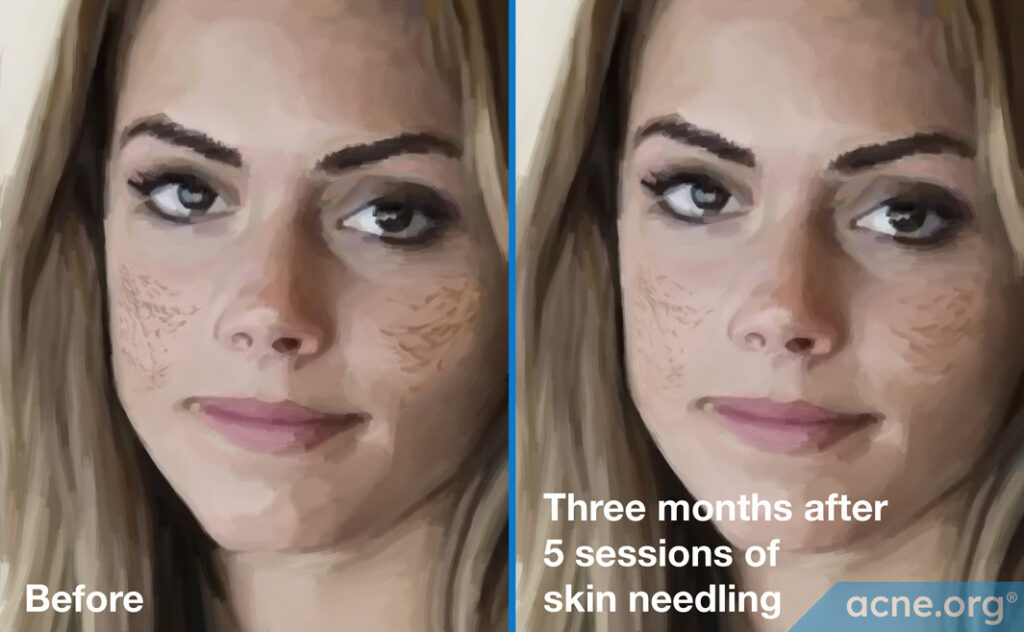
Acne scars before (left) and 3 months after (right) 5 sessions of skin needling.
References
- Alam M, et al. Efficacy of a needling device for the treatment of acne scars: a randomized clinical trial. JAMA Dermatol. 150(8), 844-9 (2014).
- Fabbrocini G, Fardella N, Monfrecola A, Proietti I, and Innocenzi D. Acne scarring treatment using skin needling. Clin Exp Dermatol. 34(8), 874-9 (2009).
- Harris AG, Naidoo C, and Murrell DF. Skin needling as a treatment for acne scarring: An up-to-date review of the literature. Int J Womens Dermatol. 1(2), 77-81 (2015).
Future reading
- Osman MA, Shokeir HA, and Fawzy MM. Fractional Erbium-Doped Yttrium Aluminum Garnet Laser Versus Microneedling in Treatment of Atrophic Acne Scars: A Randomized Split-Face Clinical Study. Dermatol Surg. 43 Suppl 1, S47-S56 (2017).
- Leheta T, El Tawdy A, Abdel Hay R, and Farid S. Percutaneous collagen induction versus full-concentration trichloroacetic acid in the treatment of atrophic acne scars. Dermatol Surg. 37(2), 207-16 (2011).
- Dogra S, Yadav S, and Sarangal R. Microneedling for acne scars in Asian skin type: an effective low cost treatment modality. J Cosmet Dermatol. 13, 180-187 (2014).
- Cachafeiro T, Escobar G, Maldonado G, Cestari T, and Corleta O. Comparison of Nonablative Fractional Erbium Laser 1,340 nm and Microneedling for the Treatment of Atrophic Acne Scars: A Randomized Clinical Trial. Dermatol Surg. 42(2), 232-41 (2016).
- Villani A, Carmela Annunziata M, Antonietta Luciano M, Fabbrocini G. Skin needling for the treatment of acne scarring: A comprehensive review. J Cosmet Dermatol. 19(9), 2174-81 (2020).
- Shen YC, Chiu WK, Kang YN, Chen C. Microneedling Monotherapy for Acne Scar: Systematic Review and Meta-Analysis of Randomized Controlled Trials. Aesthetic Plast Surg. 46(4), 1913-22 (2022).
- Casabona G, Alfertshofer MG, Kaye KO, Frank K, Mercado-Perez A, Hargiss JB, Green JB, Cotofana S. Safety and efficacy of microneedling technology in the treatment of acne scars. J Cosmet Dermatol. 20(11), 3482-91 (2021).
 Acne.org Products
Acne.org Products